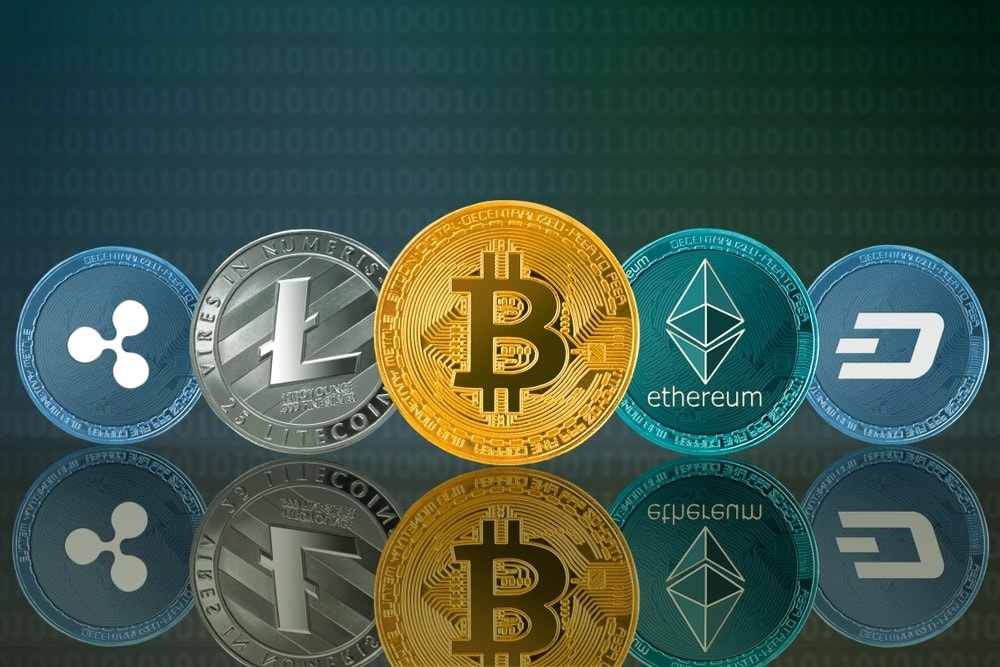Cryptocurrency continues to gain relevance in the financial world thanks to the popularity of Bitcoin; the popularity that is now paving the way for more cryptocurrencies to build and shape the global decentralized financial system.
In July this year, there were over 6000 types of cryptocurrencies recorded around the world, then the number dropped to around 5800 in August. In aggregate, that’s still a staggering increase from 66 types of cryptocurrencies in 2013. These days, It appears as though a new cryptocurrency launches every week.
The cryptocurrency market is highly competitive and most of the currencies are yet to gain traction. According to CoinMarketCap ranking, the top 10 cryptocurrencies dominate about 90% of the entire market.
Here are the top 10 types of cryptocurrencies according to their market capitalisations (caps) and trading price per unit.
Bitcoin (BTC):
This is the first and the most popular cryptocurrency; it was launched in 2009 by Satosh Nakamoto. Due to being the market pioneer, people use it to generally use bitcoin in place of cryptocurrency. BTC didn’t make a lot of traction until 2013 when it broke into the mainstream, but its recent bullish/bearish run made it even more popular. According to CoinMarketCap, as of Friday, BTC currently has a market cap of $901 billion and trades for $47,888.
Etherium (ETH):
ETH is a standalone blockchain platform that enables the building of global decentralized financial products. It’s currently the second largest digital currency after Bitcoin, with a market cap of $414 billion. ETH’s native coin – Ether – was launched in 2015 to help traders and developers trade and build apps across the ETH blockchain, is currently trading at $3,525 per ETH as of Friday.
Cardano (ADA):
Cardano is a cryptocurrency platform co-founded by Charles Hoskinson, one of the co-founders of Ethereum? Its native coin is called ADA and it allows developers and traders to perform tasks build and trade on the Cardano blockchain. ADA currently has a market cap of $77 billion and a unit is sold for $2.41.
Binance Coin (BNB):
Binance is one of the largest cryptocurrency exchange platforms in the world and has a native coin called BNB. BNB was created as a token to pay for discounted trades but later evolved into a full-blown digital currency. BNB has a market cap of $70 billion and trades at $419.07.
Tether (USDT):
Tether is a stable coin and is pegged at $1 per coin. Stablecoins are typically tied to the value of a specific asset like gold, silver, fiat currency; but Tether is tied to the U.S. Dollar. Tether stands as a medium for traders to move from one cryptocurrency to another; other cryptocurrencies are usually converted to USDT to either edge against volatility or to ease trading. USDT has a market cap of $68billion and sold for a dollar.
XRP (XRP):
This cryptocurrency was launched as Ripple in 2012 but later changed its name to XRP. XRP is very useful in cross-border transactions as it offers a way to pay in various fiat currencies. It has a market cap of $50 billion and is traded for $1.09.
Solana (SOL):
Solana is a newer cryptocurrency platform launched in March 2020. Its transaction speed and the seamless user experience of its platform makes it the fastest growing cryptocurrency network in the world. SOL is capped at $41 billion in the market and currently trades for $140.84.
Polkadot (DOT):
Polkadot is another new type of cryptocurrency that launched in May 2020. DOT is unique in the way it works; it connects blockchain technology from different cryptocurrencies and allows traders to interoperate between them. Many cryptocurrency experts believe DOT may be the best digital currency yet and could be gunning for the Ethereum throne soon. DOT has a market cap of $35 billion and trades for $35.99 per unit.
Dogecoin (DOGE):
DOGE started as an internet joke after the bullish run of Bitcoin; it was named after an internet meme featuring a Shiba Inu dog. Unlike other digital currencies that limit the number of coins traders can issue; Dogecoin has unlimited issuance and can be used to make payments or send money. DOGE is arguably the most controversial currency and owes its popularity to Elon Musk’s consistent support, which garnered DOGE millions of impressions across social media platforms. It has a market cap of $33 billion and trades for $0.2518.
USD Coin (USDC):
USDC is also a stable coin pegged to the U.S. dollar. Unlike Tether, USDC is reportedly backed by fully reserved assets or those with “equivalent fair value” – and these assets are held in accounts with regulated U.S. institutions. But it’s currently trading at $0.9998 with a market cap is $29 billion.
Polling over 6000 digital currencies, the estimated total market value of all cryptocurrencies now stands at $2.48 trillion. And due to this number and the increase in the level of acceptance, governments across the world have started building their own central digital currency that will represent their fiat in the cryptocurrency market. China is already in the final stage of developing e-Yuan and down in Europe, the European Central Bank (ECB) is actively looking into creating e-Euro. Similarly in Africa, Ghana is launching its e-Cedis this September while Nigeria has also slated the launch of its e-Naira for the same month.











